Impact On Russian Nuclear Policy And Instruments
By Dr. Pavel K. Baev, research professor, Peace Research Institute Oslo
Photos by The Associated Press
Russia’s desire for great power status and its ambition to emerge as a key power center in the presumed multipolar world are underpinned, shaped and driven by its arsenal of nuclear weapons, which quite probably is the largest in the world. But despite channeling huge amounts of increasingly scarce resources into the modernization of this arsenal, Moscow finds it increasingly difficult to harvest political dividends from these investments. A longtime principle of Russia’s grand strategy, upholding nuclear parity with the United States, is unproblematic, but the high number of warheads doesn’t translate into authority in the international arena or in Moscow’s ability to influence global developments. In the new geopolitical configuration shaped by the war in Ukraine, Russia may find a greater need to rely on its superior nuclear potential because other elements of its power, particularly its economy, are weakened and compromised. However, the applicability of nuclear instruments for scoring a victory on the Donbas battlefields is extremely low. As for deterring Western support for Ukraine, a nuclear strategy would be ineffectual, if not counterproductive.
One of the most effective ways of capitalizing on modern and diverse nuclear capabilities has traditionally been engagement in complicated arms control talks and agreements, foremost with the U.S. This high-profile nuclear bargaining secured for the Soviet Union — and since the early 1990s, for Russia — the symbolic position as the second-most powerful state in the world. This well-traveled avenue arrived at an apparent dead end at the beginning of the 2020s. The breakdown of the Intermediate-Range Nuclear Forces (INF) Treaty signed by U.S. President Ronald Reagan and Soviet Communist Party General Secretary Mikhail Gorbachev in December 1987, which signified the end of the Cold War, is the most apparent manifestation of the crisis in arms control, even if Russia is inclined to backdate the arrival of this crisis to the U.S. decision to withdraw in 2002 from the Anti-Ballistic Missile Treaty.
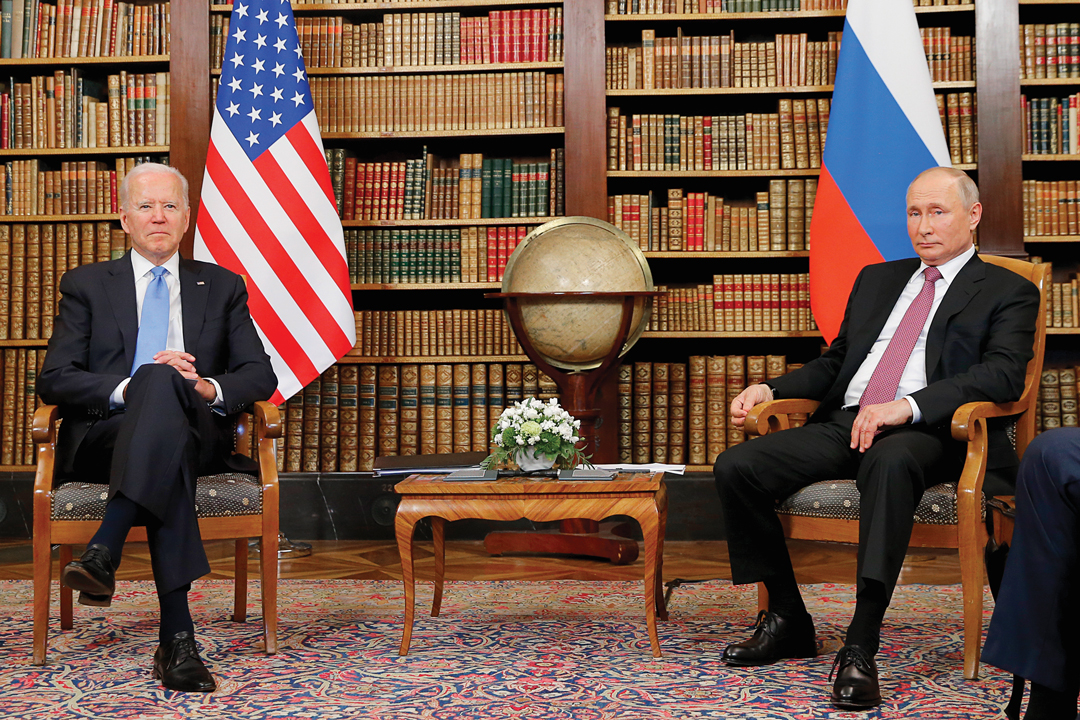
The agreement in June 2021 between U.S. President Joe Biden and Russian President Vladimir Putin to extend the New Strategic Arms Reduction Treaty (New START) for another five years could have signified a new beginning in denuclearization. But it turned out to be a non-starter. Moscow wasn’t satisfied with the acknowledgement of its status as an equal partner to the U.S. because it was conditional on following a “stable and predictable” political course, as Biden insisted. Putin feared Russia’s gradual reduction to global irrelevance. Consultations on strategic stability immediately ran into familiar deadlocks, which Moscow blamed squarely on the U.S. without acknowledging Russia’s violations of key provisions in the old agreements or the fact that its massive nuclear modernization programs have rendered the agreements impractical.
The onset of the Ukraine war in February 2022 derailed U.S.-Russia nuclear talks, and even if Putin signaled a readiness to resume dialogue and declare that nuclear war cannot be won and must never be initiated, the rationality of his decision-making has been undercut by his fateful choice to attack Ukraine. Then, in February 2023, Putin suspended Russia’s participation in New START. Clearly, the Kremlin underestimated Western solidarity in support of Ukraine, and as the prospect of Russia’s failure looms larger and Putin becomes more desperate, nuclear instruments become a potential means of last resort.
Achievements and setbacks
It was the early 2010s when Putin — then the prime minister — set a course to modernize Russia’s nuclear arsenal. The task became a top priority in the 2020 State Armament Program (SAP), approved in December 2010, when Russia appeared to be on an ascending economic track. What is remarkable, and in hindsight fallacious, about that plan was its ambition to upgrade all strategic capabilities and to develop a rich set of new nonstrategic nuclear-capable weapons systems, which inevitably resulted in the advancement of some systems and setbacks for others, leaving the structure of strategic/tactical nuclear forces seriously unbalanced. The 2027 SAP, approved in December 2017 after a delay caused by the economic crisis of 2014-2017, acknowledged the imperative to reduce expenditures, but again prescribed modernization of the whole range of capabilities, failing to set meaningful priorities and to choose between building on successes or addressing failures. In the strategic triad, the naval element gets the bulk of funding, and the introduction of the new generation of Borei-class strategic submarines is the single most expensive project in both the 2020 and 2027 SAPs.
The implementation was not without delays, caused primarily by the many failed tests of its main weapons system, the Bulava (SS-N-32) intercontinental missile. But in December 2021, the fifth submarine of this class (the K-552, Knyaz Oleg) joined Russia’s Pacific Fleet. The program is progressing unsteadily, with trials of the newest Borei (the Generalissimus Suvorov), delayed until mid-2023. Dates for launching submarines currently under construction remain uncertain. The focus on these efforts caused serious delays with the program’s second-highest priority, the Yasen-class cruise missile nuclear submarines. Seven years passed between the commissioning of the pilot vessel (the K-560 Severodvinsk) in 2014 and the entering into service of two more subs (the K-561 Kazan and K-573 Novosibirsk). As this article was being written, a fourth (the K-571 Krasnoyarsk) was still undergoing trials and five remained under construction.
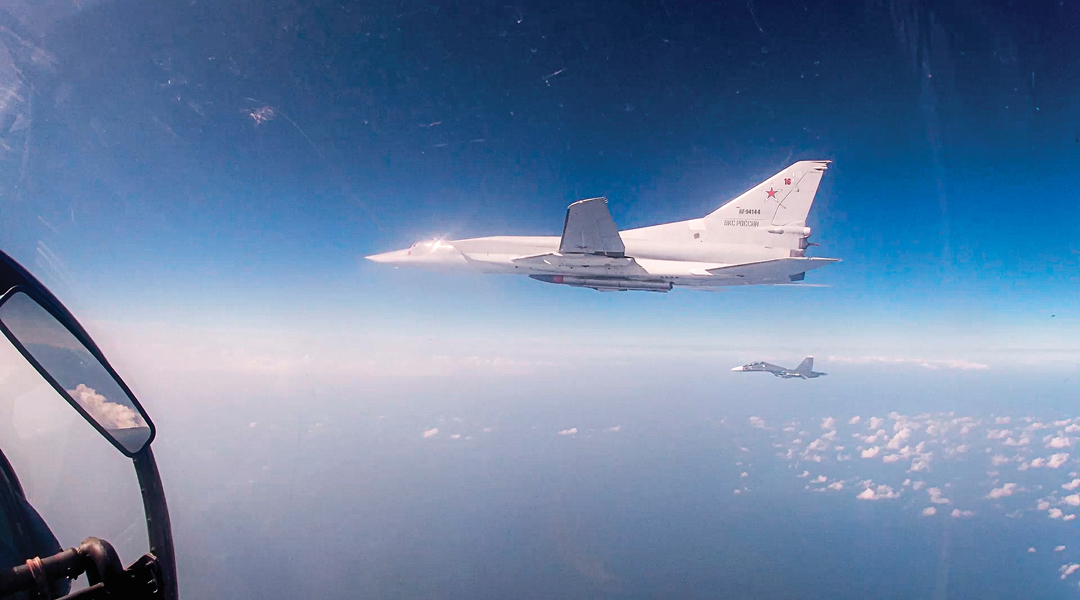
What is traditionally the strongest (in terms of numbers) nuclear forces element — land-based intercontinental ballistic missiles — also experienced setbacks with modernization. The replacement of Topol (SS-25) missiles with Topol-M (SS-27 Mod 1) and Yars (SS-27 Mod 2) missiles has progressed smoothly, but the plan for replacing the SS-18 missiles with a new heavy-liquid-fueled Sarmat (SS-X-30) missile encountered technical issues and only one test was performed, in April 2022, despite Putin’s announcement in May 2018 that Sarmat was ready for deployment. Lacking Sarmat, the newly developed hypersonic glide vehicle Avangard (a weapon Putin promoted in 2018) has been integrated with the SS-19 missile, which was expected to have been retired by 2020. Long-range strategic bombers are the most useful for demonstrating power, but Russia’s production base for such weapons has deteriorated. The development of a new generation of PAK DA bombers has been postponed and plans for resuming production of the Tu-160 bomber have also run into trouble. The only test of the first newly produced Tu-160M2 aircraft was performed in January 2022. Russia has had to rely on the legacy Tu-95 and Tu-22M3, which are prone to technical failures.
However, significant success has been achieved in developing a remarkable variety of air-launched and ship/submarine-launched nuclear capable missiles, as well as surface-to-air missile systems with anti-missile and anti-satellite characteristics. The long-range Kalibr (SS-N-27) cruise missile was tested in combat operations in Syria and is now fitted on various naval platforms, including low-displacement corvettes, as a key means of projecting firepower on shore. The hypersonic air-launched ballistic missile Kinzhal has entered service, with the MiG-31K fighter and the Tu-22M3 bomber as key platforms, though the strategic rationale for this unconventional design is dubious and several strikes on fixed targets in western Ukraine were not effective. The anti-ship hypersonic cruise missile Tsirkon (SS-N-33) has completed an extensive testing program, but the serial production of this weapons system, which potentially — along with the application of other hypersonic technologies — can constitute a game-changer in modern naval warfare, has yet to begin.
As impressive as these high-tech weapon systems appear to be, though, they require corresponding upgrades in command-and-control systems, real-time intelligence gathering, target acquisition, etc., and the Russian armed forces cannot realistically hope to meet many of these requirements. One particular weakness is the insufficient capacity of satellite communications and monitoring, which isn’t expected to improve because of mounting problems in Russia’s space program. That leaves the strategic early warning system more reliant on the modern phased-array Voronezh-M/DM/VP radars, than on satellites. Additionally, to make nonstrategic nuclear-capable weapons systems into useful instruments of nuclear policy, they must be connected to nuclear warheads. But there are few signs of such interoperability. The openly available data on nonstrategic nuclear munitions is no better than anecdotal, but it can be established for fact that they are still safely locked in central storage facilities, as prescribed by the Presidential Nuclear Initiatives (PNI) advanced simultaneously by the Soviet Union and the U.S. in 1991. Several large-scale exercises in 2017-2021 involved simulations of a nuclear strike, but in real terms, Russian armed forced conducted no training for handling nuclear munitions.
Perhaps the most serious concern related to Russia’s execution of nuclear modernization plans is the high risk of accidents. At least three such setbacks happened in 2019, including a deadly shootout caused by brutal bullying in a military unit servicing nuclear munitions. A fire onboard the nuclear-powered submersible AS-31 (nicknamed Losharik) of the Northern Fleet claimed the lives of 14 officers, but a greater disaster was averted by closing the connector to the transport vessel — the nuclear submarine Podmoskovye (BS-64, converted Delta IV-class). A great effort by investigative journalists breached the wall of secrecy around the explosion of a nuclear-propelled missile after a failed test near Severodvinsk, in the Arkhangelsk region, with seven lives lost and a widespread panic about radioactive contamination. Putin asserted that tests would continue “no matter what,” but in fact no new advances in the Burevestnik nuclear-armed cruise missile program have been reported. No significant accidents were reported in 2020 and 2021, which might indicate a tightening of safety measures, as well as a curtailing of the riskier nuclear programs, like the nuclear-propelled, unmanned underwater vehicle, Poseidon (advertised by Putin in a 2018 speech).
Russia’s efforts at modernizing its nuclear capabilities have involved a remarkably wide range of projects, which follows the Soviet pattern of developing and deploying multiple weapons systems of similar kind and putting the interests of the powerful defense-industrial complex ahead of requests from the military. This desire to get ahead of competitors in the arms race on every level is incompatible with Russia’s deteriorating industrial base. Facing a severe economic recession and denied access to crucial Western technologies, Russia faces painful choices on cutting funding for newly launched and half-implemented nuclear programs that will result in debilitating disruptions.

Opportunities and limitations
The scale of effort directed toward upgrading and diversifying the nuclear arsenal signals Russia’s desire to use it for achieving more ambitious goals than merely deterrence, which could be effectuated with much more modest means. What has constituted a tricky problem for Moscow is the parallel desire to uphold the system of international norms and regulations, first and foremost regarding nuclear nonproliferation, which grants it tangible privileges, such as a permanent seat on the U.N. Security Council. This political proposition of having it both ways — making nuclear weapons into more applicable instruments of policy and presenting itself as an adherent of the arms control system — became clear in Putin’s 2018 address to the Federal Assembly, half of which was rather unexpectedly devoted to nuclear rearmament. The animated presentation of a set of six new weapons systems impressed not only his excitable audience but also Western policy planners. Putin sought to reinforce that impact by adding further emphasis in his 2019 address. He didn’t return to this theme, however, in the 2020 and 2021 addresses, focusing instead on his domestic agenda, perhaps recognizing that he could no longer travel down two diverging tracks. The Ukraine war has aggravated this impasse. Putin’s barely veiled threats of extra-grave consequences failed to discourage NATO from supplying arms to Ukraine and all but destroyed any vestiges of trust in Russia’s commitment to its Nuclear Nonproliferation Treaty (NPT) obligations.
The key targets of Putin’s threats to use “wonder-missiles” are European NATO members with anti-nuclear leanings that were reinvigorated with the campaign to promote the 2017 Treaty on the Prohibition of Nuclear Weapons (TPNW). Russia’s intent was to deepen and exploit the split between the U.S. and its European allies, similar to its efforts to block and compromise NATO’s commitment to building the European missile defense system. The noisy campaign against missile defense was gradually toned down by Moscow in the late 2010s, as Russia deployed S-400 surface-to-air missile systems from Syria to Kaliningrad and tested several advanced anti-missile and anti-satellite weapons, from the A-235 Nudol interceptor to the S-500 Prometheus (an upgrade of the S-400 system).
In hindsight, Putin’s push can be seen as an attempt to exploit European disagreements with former U.S. President Donald Trump’s policies, but it failed when NATO managed to take a firm collective stance on holding Russia responsible for violating the INF Treaty and on justifying the U.S. withdrawal. Putin’s bragging about new missiles also failed to sufficiently rekindle nuclear fears and instead made it apparent that the framework of the INF Treaty became irrelevant for checking the arms race. As Biden started the work of rebuilding NATO cohesion, he found that key European states were ready to rethink the parameters of deterrence and the scope of their defense efforts. Even states that initiated and promoted the TPNW, such as Norway and Sweden, have opted not to join it because the nuclear threat from Russia was seen — many months before the eruption of the Ukraine war — as compelling evidence for new investments in containment.
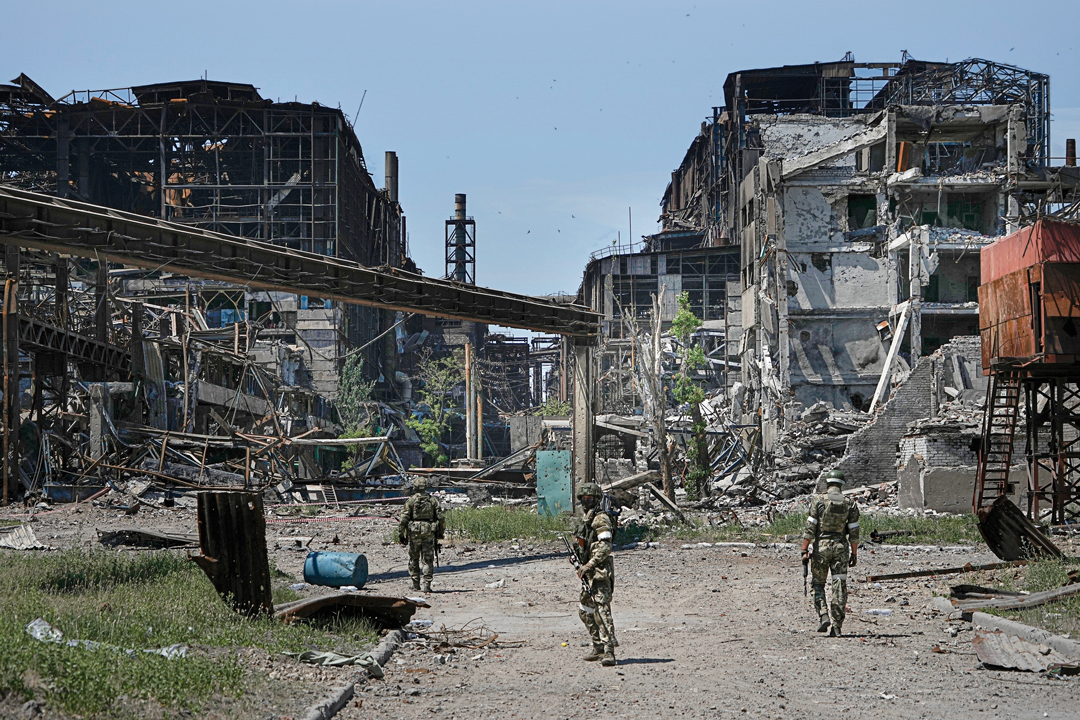
Another key aim of Russia’s nuclear buildup has been to deter the threat of revolutions. The Kremlin’s current obsession with exorcising the specter of “color revolutions” can be traced to the inherent instability of Putin’s autocratic regime, with its spectacular corruption and hostility to reforms. It is his personal preoccupation — cultivated by self-interested courtiers — with the perceived Western sponsorship and manipulation of protests that underpins the idea of deterring this interference with nuclear instruments. In Russian strategic thinking, color revolutions are now defined as a new form of warfare, in which Western incitement of unrest is combined with U.S. long-range, high-precision strikes. Russia conceptualizes a way to counter this “aggression” by possessing a versatile arsenal of nuclear weapons that makes the incitement of unrest too risky, and the use of long-range strikes ineffectual because of missile defense systems and the threat of punitive retaliatory strikes.
The risks inherent in this strategy are rather obvious. Not only does it create the potential for accidents, it requires that Russia constantly reinforce the credibility of the implicit nuclear threat, creating a greater risk for conflict. Russia resolutely denies that any strategic proposition resembling the much-debated “escalate to de-escalate” concept has ever existed, and Putin in his capacity as commander-in-chief has ruled out planning for a first nuclear strike, while making plenty of vague pronouncements about a nuclear catastrophe. In-depth research (to which the Marshall Center has contributed) into new features in Russian strategic thinking and its manifestation in military preparations and training reveals that in the course of a conventional war, Russia perceives a nuclear strike aimed at securing a victory (or at least an agreeable outcome) as a feasible and justifiable option. The question about whether the Kremlin might resort to such an option not only under jus in bello (currently, to avoid defeat in the Ukraine war) but also in the course of domestic unrest threatening to dislodge the ruling regime (and perceived by the regime as a hostile action directed from abroad), is not an exercise in thinking about the unthinkable. Persistent recycling by Russian elites of the mind-boggling thesis “Нет Путина – Нет России” (If there is no Putin — there is no Russia) indicates that this question cannot be answered in the negative.
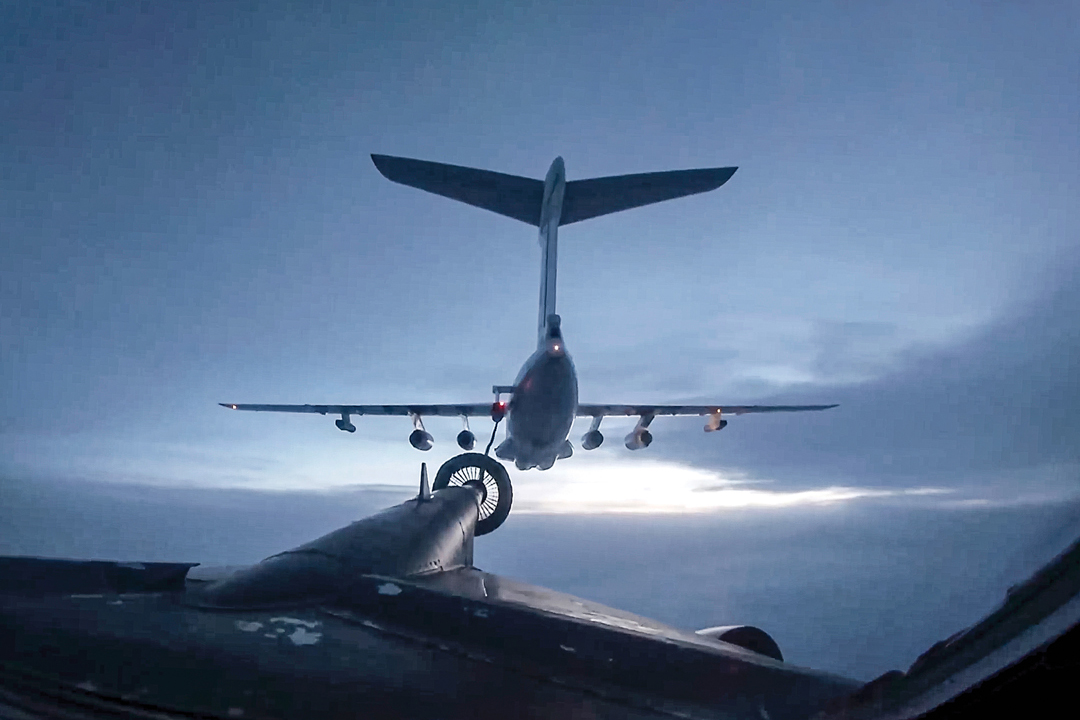
This strategic messaging — loaded with heavy hints — is aimed not only at Western adversaries but also at China, a crucially important but difficult strategic partner for Russia. Some mainstream analysts in Moscow argue that the steady upgrading of security ties since mid-2014 amounts to the emergence of a military alliance, even if formally undeclared, while other analysts point to the security threats emanating from China and the limited pro forma support from Beijing for Moscow’s “special operation” in Ukraine. For the Kremlin, the obvious power inequality in this highly valued partnership, and Russia’s deepening dependency on economic ties with China, constitute a source of grave concern. Russia must turn to its modernized strategic nuclear arsenal, which is far superior to China’s, to balance the power. For that matter, the first joint patrol by two Russian and two Chinese strategic bombers over the Sea of Japan in July 2019 had little real significance (yet caused a serious military incident involving South Korea) and was intended as a show of the greater reach of Russian long-range aviation compared with China’s capabilities. A joint patrol involving four Chinese (H-6K) and two Russian (Tu-95MS) strategic bombers was held in May 2022 over the Sea of Japan in response to a summit held by the Quad (Australia, India, Japan and the U.S.) in Tokyo.
Putin’s claim in October 2019 that Russia was helping China build a modern early warning system was more about geostrategic posturing than a real step in upgrading strategic ties. What the Kremlin might deliver is Beijing’s engagement in arms control negotiations in a new trilateral setting, something the Trump administration insisted on as a condition for extending the New START. Biden dropped that demand at the Russia-U.S. summit in Geneva in May 2021, but his steady course (undiminished by the Ukraine war) on countering China’s rising aggressiveness implies that any new strategic arms control regime — replacing the New START suspended by Putin and set to expire in February 2026 — must include China. There is scant information in Moscow about the guidelines and parameters of China’s fast-progressing nuclear modernization program. But there is a fairly clear understanding that Beijing is not interested in adjusting these guidelines according to any newly agreed Russia-U.S. limits, or in exposing these parameters to external monitoring. There is also a clear impression in Moscow that China would much prefer to see Russia go an extra diplomatic mile toward preserving the remaining structures of arms control and avoid blatant violations of old commitments. If there is one voice that can discourage Putin from contemplating a nuclear escalation of his presently deadlocked and possibly disastrous intervention in Ukraine, it belongs to Chinese President Xi Jinping.
The region where Russia’s nuclear buildup generates the greatest security implications — and where China can advance its interests — is the Arctic. The Kola Peninsula, with its extraordinary concentration of nuclear submarines, warheads and radioactive waste, is by far the most nuclearized area in the world, and Russia’s high command has for a decade executed a complex program of military buildup aimed at protecting these assets. This sustained militarization undercuts efforts at promoting international cooperation in the High North and interferes with China’s interests in the Arctic that are focused on economic and commercial expansion, which defines the conflict-avoidance security perspective. Russia’s Nordic neighbors are greatly concerned about the nuclear risks, but China is also perfectly aware that the tests of nuclear-propelled cruise missiles and underwater drones advertised by Putin can only be performed in Northern test sites (such as on Novaya Zemlya), and involve a high probability of radioactive contamination. Some policy analysts in the U.S. mix Russian and Chinese ambitions and military preparations in the High North and argue that the war in Ukraine has brought these two strategic partners closer together. However, China explicitly disapproves of the Arctic’s militarization, causing Russia to move with extra care in implementing its nuclear plans in the region. An underground test of tactical nuclear munitions may constitute part of Russia’s planning for accentuating the threat of escalation in Ukraine and compromising, if not destroying, the Comprehensive Nuclear-Test-Ban Treaty of 1996 (which neither China nor the U.S. has ratified). Beijing may be in a position to discourage Moscow from staging this test.
Overall, Moscow’s track record for using nuclear weapons as instruments of policy is mixed at best, and the breakdown of the key structures of arms control — caused in a large measure by these experiments in wielding nuclear instruments — is a serious setback for the policy of upholding Russia’s international status. This policy was seriously damaged by Putin’s decision to start the war against Ukraine, but his circle of loyal minions promotes the denial of consequences. In a situation with fast-shifting global geopolitical interactions, in which Russia finds itself at a disadvantage due to its eroding economic strength, the besieged autocratic regime, anxious about domestic stability, may see a greater need to rely on its upgraded but underutilized nuclear assets.
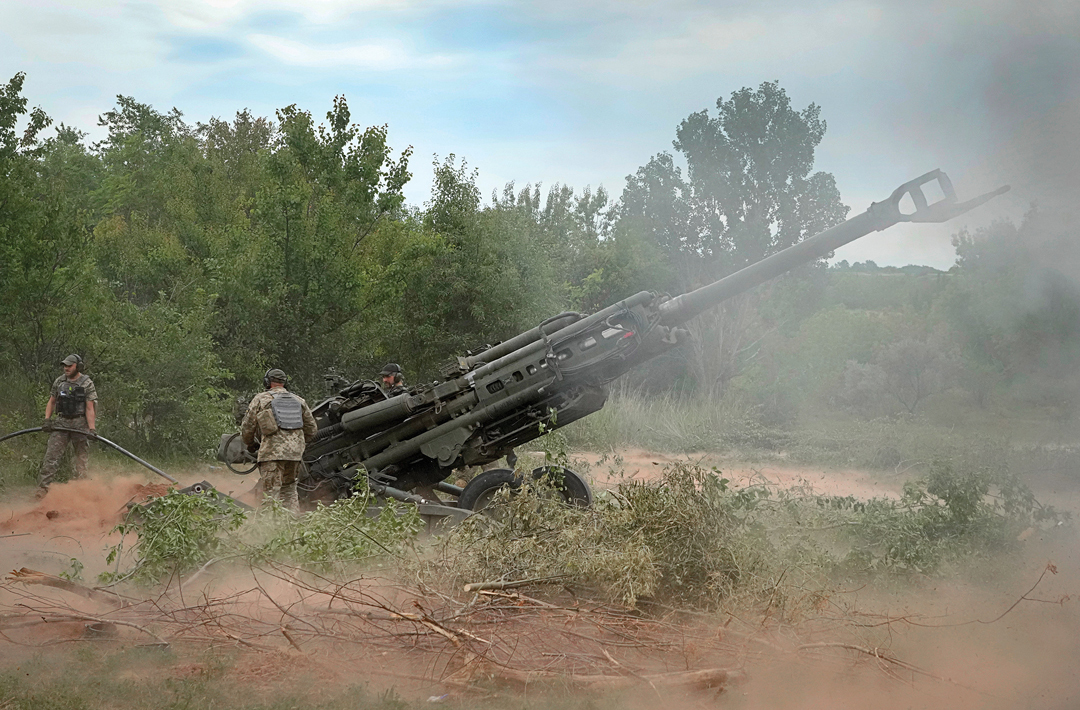
War-determined prospects and implications
At the beginning of 2022, Russia’s position in the international arena appeared solid and prominent; many Western leaders sought to engage with Putin to discharge the rising tensions around Ukraine. Yet, that show of respect wasn’t convincing for the Kremlin, which was worried about the possible growth of domestic discontent caused by its serious mismanagement of the COVID-19 outbreak. The Kremlin believed that after the pandemic, the true status of major powers in the presumed multipolar world would be determined by their economic resurgence and dynamism, capacity for innovation, and the efficiency of their health care systems — and Russia was lagging in all of these components. The size of its nuclear arsenal was a parameter of diminishing significance, and Putin’s consistent efforts at promoting its importance included the signing on June 2, 2020, of a decree outlining Russia’s policy on nuclear deterrence, the first document of this kind. But those efforts had little impact. The presumption of Russia’s forthcoming decline, along with too many misperceptions and miscalculations to be mentioned here, shaped the decision to attack Ukraine.
The war has affected and deformed most global geopolitical and geoeconomic interactions. Yet, it has not undermined the foundations of strategic nuclear stability. Against many expert assessments, the character of warfare shifted from initial fast-moving operations into old-fashioned positional battles dominated by artillery rather than airpower, while many hybrid features, including the much-anticipated cyberattacks, are barely evident. The war is also increasingly localized in eastern and southern Ukraine. Russia’s capacity for horizontal escalation is undercut by the imperative to concentrate all available military resources on the Donbas and Kherson battlefields, and by heavy casualties. Nuclear weapons appear to have no place in these high-intensity conventional hostilities; nevertheless, the war definitely has a complex and evolving nuclear dimension.
The prospect of a nuclear escalation hangs heavy over decision-making by NATO and, more broadly, the Western coalition, which Putin has sought to split with heavy hints about possible disastrous consequences. It is clear that he miscalculated the determination in the collective West to deny Russia a success in its brutal projection of power, and this miscalculation keeps deepening as the U.S. and key European states revise their assessments and supply Ukraine with more powerful weapons systems. The aims of the Western alliance, which is far more united than the Kremlin had anticipated, changed from helping Ukraine resist the massive military onslaught to empowering it to win back occupied territories. This shift necessitates a change in Russian war planning — from achieving a near-total victory to avoiding a sequence of retreats. Because the possibility of defeat requires a practical outlook, the General Staff must prepare a set of countermeasures, which cannot leave out nuclear instruments.
A sudden nuclear strike, even if single-target and low-yield, can only be a measure of last resort to be delivered if Putin’s regime concludes that the fiasco of his “special operation” threatens the regime’s very existence. A threat of such a strike may, however, be perceived as an effective means to put pressure on the European states. In order to make the threat more real, Putin may decide to cancel the PNI approved by Gorbachev in 1991, allowing the movement of nonstrategic nuclear warheads from central storage areas to bases in Crimea and Kaliningrad. The Kremlin might assume that the U.S. would be reluctant to withdraw from its PNI, while Russian troops could start training for operating nuclear munitions, for instance with the Iskander-M mobile ballistic/cruise missile launchers.
One way to amplify European concerns could be a conventional missile strike on a nuclear power station in Ukraine, for instance in the city of Netishin in western Ukraine. Ukrainian forces could be blamed (as Russia did in August 2022) for shelling close to reactors in Enerhodar, a city captured by Russian troops in March 2022. At the same time, Moscow might try to show a readiness for engaging in talks with the U.S. on strategic stability, asserting that combat operations in Ukraine have no relevance for strategic arms control matters covered by the New START, and that new weapons systems bring an urgency to such talks. Such a stance was intended to boost Russia’s profile at the NPT Review Conference, held in New York in August 2022. After a two-year delay caused by the COVID-19 pandemic, Russia is keen to portray itself as a responsible owner of nuclear assets and a firm supporter of the NPT regime; it is equally keen to shift international attention from the Ukraine war to the Iranian and North Korean nuclear programs, which indeed attracted much discussion at the conference. It will put the blame for the breakdown of the Joint Comprehensive Plan of Action, negotiated in 2015, squarely on the U.S., but proceed with sabotaging all efforts at revising the deal without coming openly to the Iranian side.
Russia might try to further weaken global nuclear norms by withdrawing from the Comprehensive Nuclear-Test-Ban Treaty, which it signed in September 1996 and ratified in June 2000, citing U.S. refusal to ratify (after signing in September 1996) and alleged preparations for conducting a test. In fact, Russia itself has been preparing the Novaya Zemlya site for tests. Moscow has good reason to expect a spike in concerns from Norway, or from Sweden and Finland, who will find little protection from this “hybrid” threat even with membership in NATO.
Overall, Russia’s nuclear policy will inevitably degenerate and become more reckless under the impact of the unwinnable Ukraine war. Even before launching this disastrous intervention, Moscow had been looking for ways to maximize political dividends from its massive investments in modernizing the nuclear arsenal. Preventing Russia’s use of nuclear weapons demands priority attention from the collective West and NATO in particular, and every use of these instruments as a political threat by Moscow needs to be countered, rather than dismissed as another bluff. The U.S. and its key European allies need to deliver a united message to the Kremlin that reinforces its intention to apply all necessary means to end its aggression.
Russia has encountered far stronger NATO unity and Western solidarity than expected, and it appears now that its only hope for splitting the coalition supporting Ukraine is in the limited application of various nuclear means. NATO members have different exposures to the nuclear threats emanating from Russia, and their societies have different sensitivities to and resilience against nuclear risks. Upholding and consolidating the unity of the Alliance in deterring Russian nuclear blackmail and, quite possibly, in responding to Russia’s crossing the nuclear threshold is a difficult task of massive complexity and great urgency.
This article is adapted from a chapter in the book, “Russia’s Global Reach: A Security and Statecraft Assessment.”


Comments are closed.